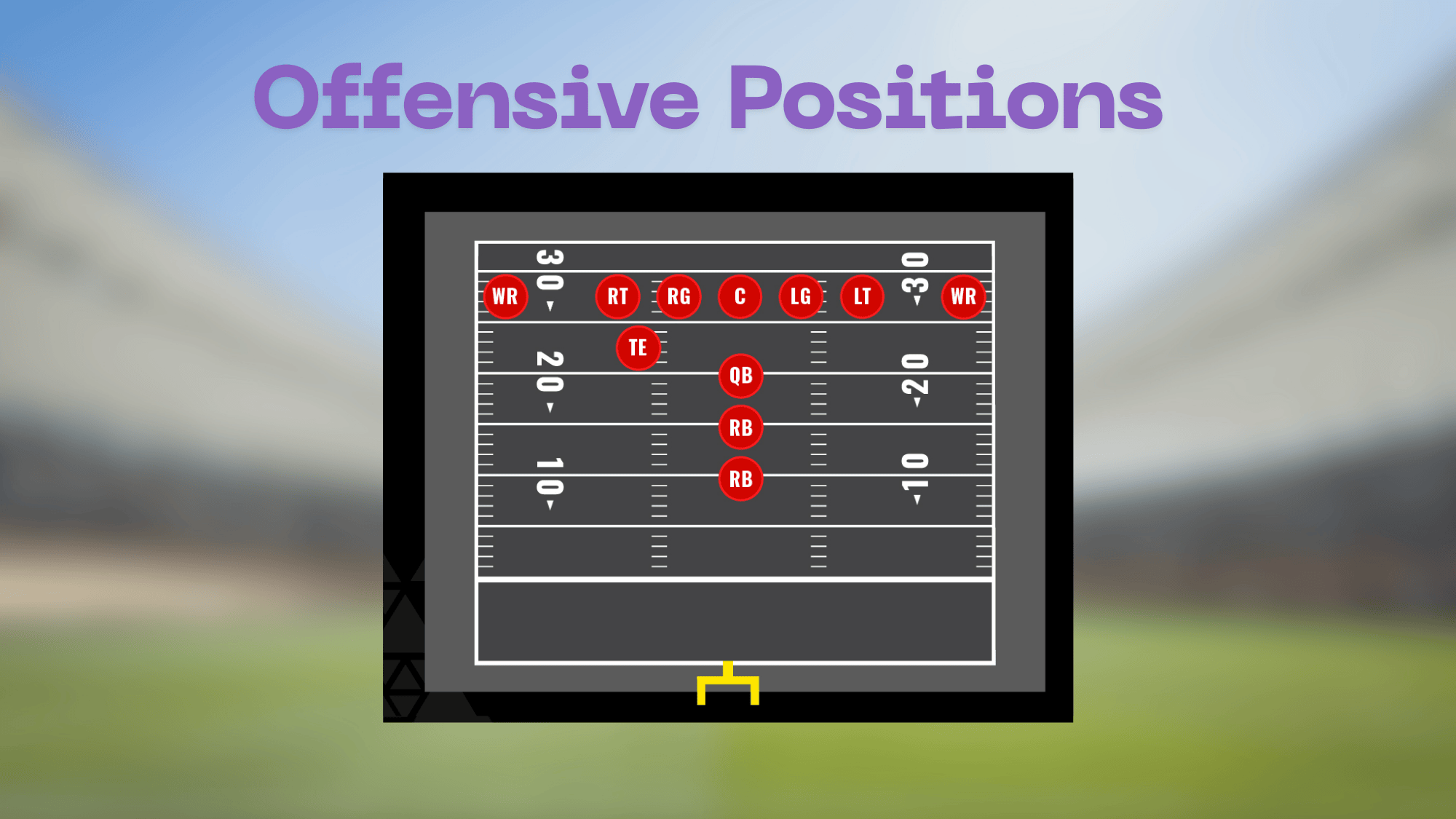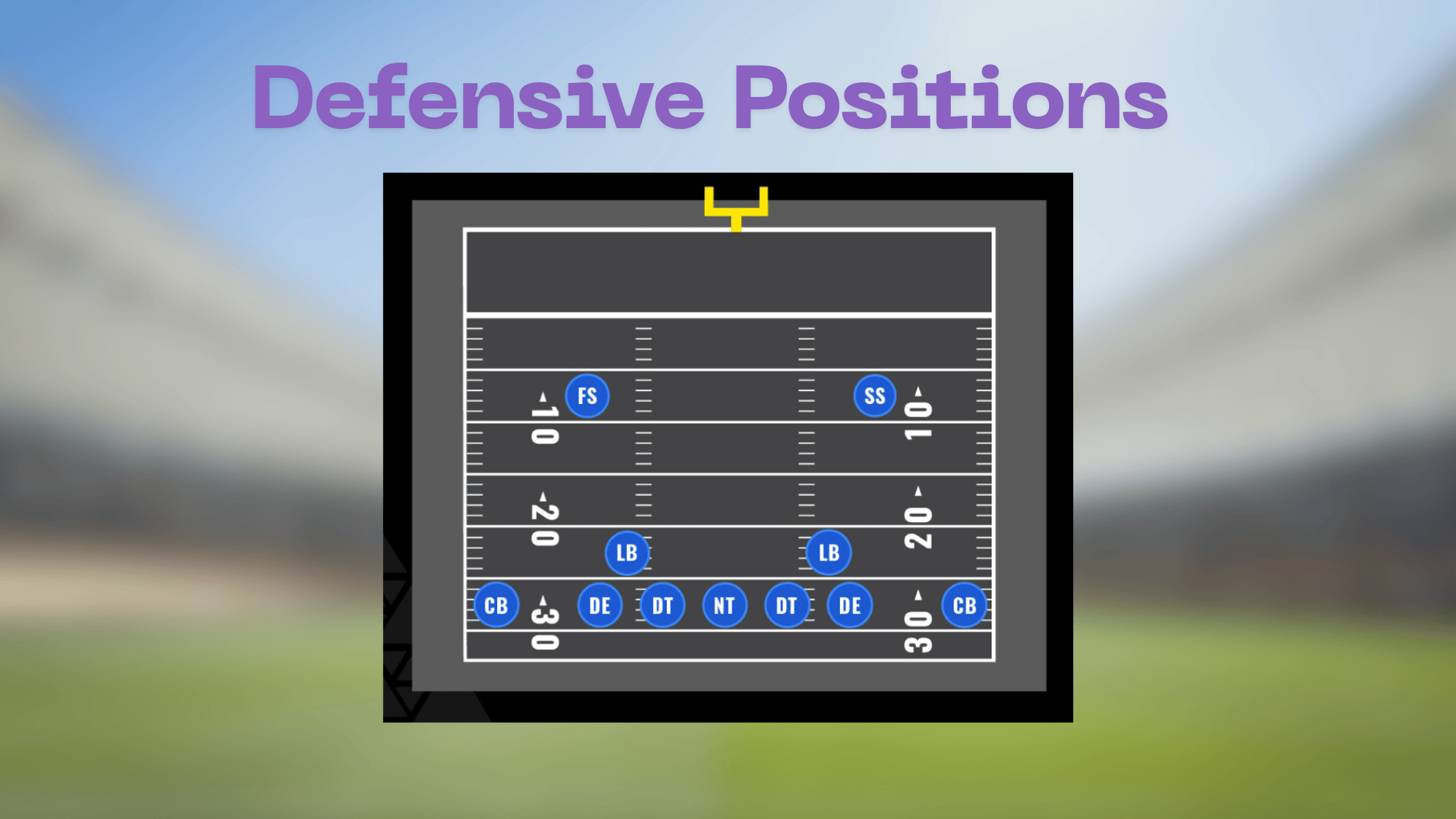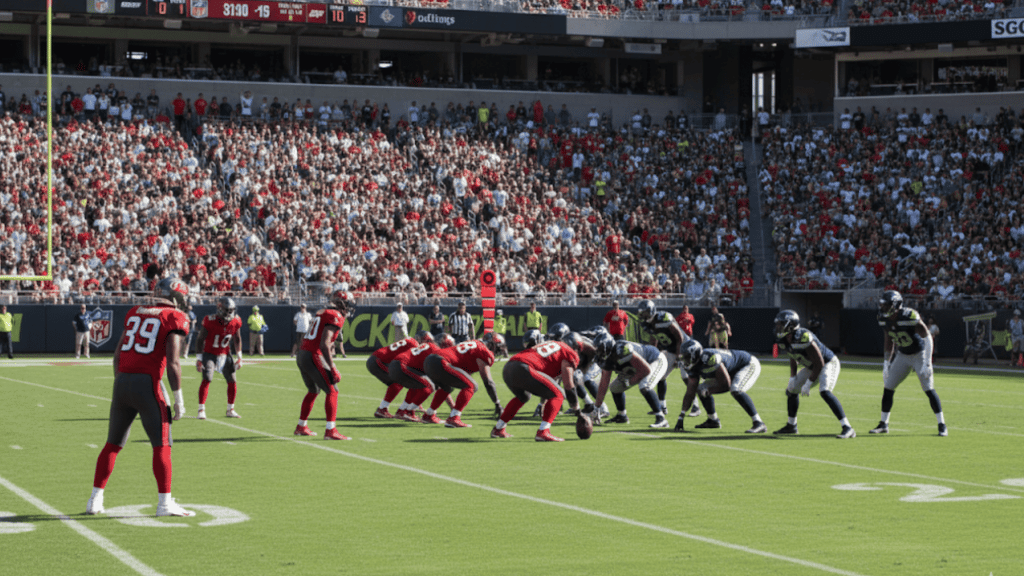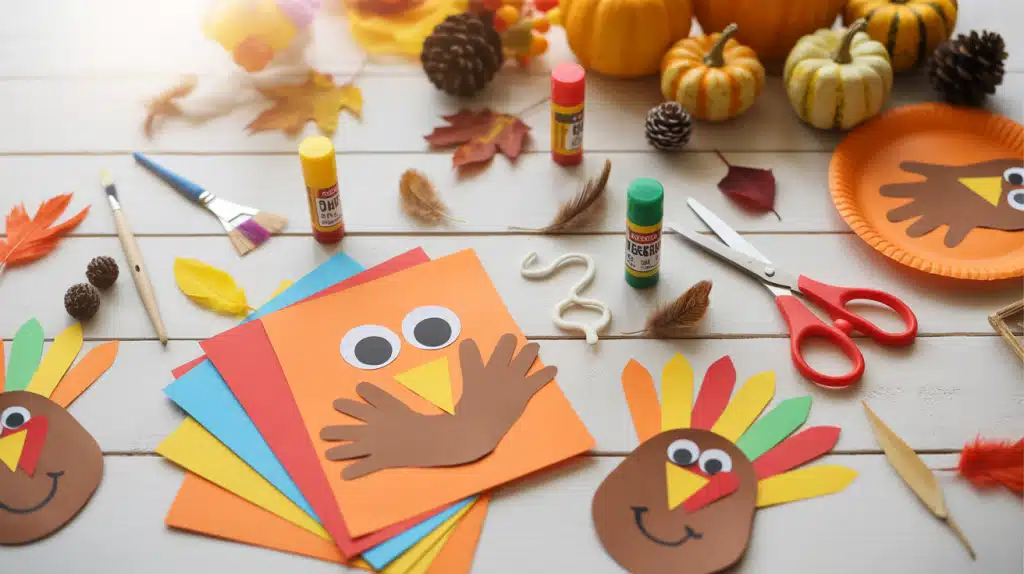If you’ve ever tuned into an NFL game or watched the Super Bowl, you know football looks like organized chaos.
Players crash into each other, whistles blow nonstop, and commentators shout out names like linebacker blitz and slot receiver. For beginners, it can be overwhelming.
Here’s the good news: once you understand football positions and what each player does, the game suddenly makes sense.
This guide breaks down every football position in detail, what they do, their responsibilities, and why they matter. By the end, you’ll be able to watch any football game with confidence.
How Football Positions Work
Every football team has 11 players on the field at a time, but not always the same 11. The lineup changes depending on whether the team is playing offense, defense, or special teams.
- Offense: Focused on moving the ball forward and scoring touchdowns.
- Defense: Aims to stop the offense, force turnovers, and protect their end zone.
- Special Teams: Handle kicking plays like punts, field goals, and kickoffs.
Players are highly specialized. For example, a quarterback is trained to throw, a linebacker to tackle, and a kicker to nail field goals.
Together, these units switch in and out throughout the game, creating the chess-like strategy that makes football so exciting.
Offensive Positions (The Scoring Side)

The offense’s main goal is simple: move the ball down the field and score touchdowns. Offense is built around two groups: the offensive line (the blockers) and the skill players (the ball handlers and receivers).
Quarterback (QB)
The quarterback is the leader of the offense — think of them as the team’s general. They line up behind the center, receive the snap, and decide whether to:
- Throw the ball to a receiver.
- Hand it off to a running back.
- Or keep it themselves and run.
Great quarterbacks need vision, decision-making skills, and a strong, accurate arm. Players like Tom Brady, Patrick Mahomes, and Peyton Manning became household names because they controlled games with both brains and talent.
Running Back (RB)
The running back lines up behind or next to the quarterback and is the primary ball carrier. They’re fast, agile, and capable of breaking tackles.
Running plays, where the RB takes a handoff and tries to sprint past defenders, can set the tone for an entire drive.
There are two main types:
- Halfback (HB): The quicker, more agile runner who takes most carries.
- Fullback (FB): The bruiser who mainly blocks defenders but can also run in short-yardage situations.
Running backs like Jim Brown, Barry Sanders, and Adrian Peterson became legends for their ability to dodge defenders and sprint for touchdowns.
Wide Receiver (WR)
Wide receivers are the offense’s playmakers. They sprint down the field, run precise routes, and catch passes from the QB.
WRs are usually the fastest athletes on the team and line up near the sidelines. Some play as slot receivers, positioning themselves closer to the middle of the field to catch shorter, quicker passes.
Besides catching, they’re also asked to block defenders during running plays. Famous receivers like Jerry Rice and Randy Moss changed the game with their speed and hands.
Tight End (TE)
The tight end is a hybrid role in football, part offensive lineman, part receiver. They line up next to the tackles and must be big enough to block but athletic enough to run routes and catch passes.
Modern tight ends like Travis Kelce and George Kittle show how valuable this position is. They create mismatches by being too strong for cornerbacks to tackle and too fast for linebackers to cover.
Offensive Line (OL)
The offensive line is the unsung hero of football. Without them, the QB would get tackled every play.
Positions on the line include:
-
Center (C): Snaps the ball to the QB and blocks defenders.
-
Guards (LG & RG): Line up on either side of the center, blocking inside defenders.
-
Tackles (LT & RT): Line up on the outside of the line, protecting the QB from edge rushers.
The left tackle is especially important because they guard the QB’s “blind side.” Linemen are often the biggest guys on the field, weighing 300 pounds or more, but they also need quick feet to block fast defenders.
Defensive Positions (The Stopping Side)

Defense is all about preventing the offense from scoring. The defensive unit is usually divided into three groups: defensive line, linebackers, and defensive backs.
Defensive Line
The defensive line is the first wall of resistance. They line up directly across from the offensive line.
-
Defensive Ends (DE): Positioned at the ends, they rush the quarterback and stop outside runs. They need both speed and strength.
-
Defensive Tackles (DT): Positioned inside, they clog up the middle and fight off blockers.
-
Nose Tackle (NT): Found in certain formations (like the 3–4 defense), this massive player anchors the center of the line, stopping inside runs.
Legends like Reggie White and Aaron Donald made their mark as dominant linemen.
Linebackers (LB)
Linebackers line up just behind the defensive line. They’re the most versatile players, asked to stop runs, cover passes, and sometimes blitz the QB.
-
Middle Linebacker (MLB): Often called the “quarterback of the defense.” They call plays, direct teammates, and tackle running backs.
-
Outside Linebackers (OLB): Positioned on the edges, they defend against outside runs, rush the QB, and sometimes cover receivers.
Ray Lewis and Lawrence Taylor were famous for their leadership and toughness as linebackers.
Defensive Backs (DB)
Defensive backs are the last line of defense, responsible for covering receivers and stopping long plays.
-
Cornerbacks (CB): Line up against WRs, trying to prevent catches or intercept passes.
-
Safeties (S): Two types:
| Position | Role |
|---|---|
| Strong Safety (SS) | Plays closer to the line, helps stop runs, and covers tight ends. |
| Free Safety (FS) | Plays deep in the field, guarding against long passes and reading the quarterback’s eyes. |
A good secondary can shut down even the best passing offenses. Ed Reed, Deion Sanders, and Troy Polamalu are legendary defensive backs.
Special Teams (The Game-Changers)
Special teams handle all the kicking plays, field goals, punts, and kickoffs. These moments often decide close games.
Key roles include:
| Position | Role |
|---|---|
| Kicker (K) | Handles field goals, extra points, and kickoffs. Accuracy is everything. |
| Punter (P) | Kicks the ball on fourth down to pin the other team deep in their territory. |
| Kick Returner (KR) | Catches kickoffs and tries to run them back for big gains. |
| Punt Returner (PR) | Similar to KR but handles punts. |
| Long Snapper (LS) | Specializes in snapping the ball long distances for punts and kicks. |
| Holder (H) | Catches the snap and holds the ball for the kicker. |
| Gunner (G) | Sprints downfield to tackle the returner. |
| Personal Protector (PP) | Stands in front of the punter for extra blocking. |
Although special teams don’t get as much spotlight, a clutch kicker or electric returner can turn the tide of a game.
Football Positions by Jersey Numbers
In the NFL, player positions are tied to number ranges, making it easier for referees and fans to identify roles:
-
Quarterbacks, Kickers, Punters: 1–19
-
Running Backs, Defensive Backs: 20–49
-
Wide Receivers, Tight Ends: 10–19, 80–89
-
Offensive Linemen: 50–79
-
Defensive Linemen & Linebackers: 50–79, 90–99
This numbering system also prevents sneaky plays, since only certain numbers are “eligible” to catch passes.
Conclusion
Football may look complicated at first, but once you understand the roles, the game becomes a lot more exciting.
Every position, from the star quarterback to the silent long snapper, plays a crucial part in moving the ball, defending the field, or controlling special teams.
Next time you watch a game, you’ll know exactly why the left tackle is protecting the QB’s blind side, why safeties sit deep, and why special teams can flip momentum in a single play.
With this knowledge, you’re no longer just a spectator, you’re part of the strategy. So grab some snacks, invite your friends, and enjoy the game like a pro.





































